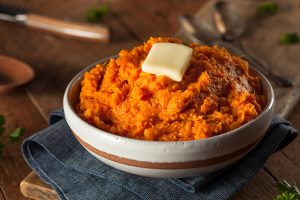Truffles, often referred to as “diamonds of the kitchen,” possess an air of mystique and sophistication that captivates culinary enthusiasts and chefs alike. These underground fungi, hunted with the help of skilled truffle dogs or pigs, have a reputation for delivering an exquisite and elusive flavor profile. In this exploration, we embark on a sensory journey to unravel the taste of truffles, examining the nuances, origins, and culinary applications that make them a coveted and indulgent ingredient in the world of gastronomy.
Origins and Types of Truffles:
Truffles belong to the fungi family and grow underground, forming symbiotic relationships with the roots of certain trees. The most prized and sought-after truffles come from regions in France and Italy, with the Périgord and Alba truffles being among the most celebrated varieties. Other notable types include the Burgundy truffle, summer truffle, and Perigord truffle, each offering a distinct flavor profile and culinary appeal.
Understanding the Flavor:
Describing the taste of truffles is a nuanced task, as their flavor is multifaceted and complex. The key to appreciating truffles lies in recognizing the combination of aromatic compounds that contribute to their unique taste. The primary flavors associated with truffles can be characterized as earthy, musky, spicy, and, in some cases, even garlicky. Truffles contain compounds such as 2,4-dithiapentane, which contribute to their distinct aroma.
The Earthy Symphony:
At the heart of the truffle’s flavor is a rich earthiness that evokes the damp, fertile soils in which these fungi thrive. The earthy notes are often likened to the essence of a forest floor after rain, with a deep, grounding quality that adds a layer of complexity to dishes.
Musky Undertones:
Truffles carry an unmistakable muskiness that infuses dishes with an alluring scent. This musky quality, reminiscent of the natural odors found in the wild, is a defining characteristic that distinguishes truffles from other aromatic ingredients.
Pungent Aroma and Umami Bliss:
The pungent aroma of truffles is a hallmark of their culinary allure. This characteristic scent is intensified when the truffle is shaved or grated over warm dishes, releasing its aromatic compounds into the air. The combination of earthy, musky, and spicy notes contributes to the umami richness that defines the truffle experience.
Varietal Nuances:
Different varieties of truffles offer subtle variations in flavor, allowing connoisseurs to distinguish between them. For example, the Périgord truffle is renowned for its intense aroma, while the Alba truffle boasts a delicate and refined taste with floral undertones. Understanding these nuances adds depth to the appreciation of truffle-based dishes.
Culinary Applications:
Truffles are a prized ingredient in haute cuisine, where their distinctive flavor elevates a wide range of dishes. Here are some common culinary applications that showcase the versatility of truffles:
Truffle-infused Oils and Butters:
Truffle-infused oils and butter are popular ways to impart the essence of truffles to dishes. Drizzled over pasta, risotto, or even popcorn, these additions elevate the culinary experience.
Truffle Salt and Seasonings:
Truffle salt, a blend of sea salt and finely minced truffles is a simple yet impactful way to enhance the flavor of dishes. It adds a finishing touch to salads, grilled vegetables, or even scrambled eggs.
Truffle Pasta and Risotto:
Truffles pair exceptionally well with pasta and risotto, where their earthy and musky notes complement the creamy textures of the dishes. Shaved truffles atop a plate of truffle-infused pasta create a luxurious dining experience.
Truffle-infused Sauces:
Truffle-infused sauces, whether used in gravies, dressings, or as accompaniments to meats, contribute depth and complexity to the overall flavor profile.
Truffle-infused Cheese:
Truffle-infused cheeses, such as truffle brie or truffle pecorino, marry the rich, earthy tones of truffles with the creamy, savory qualities of cheese.
Truffle-infused Honey:
Truffle-infused honey offers a unique combination of sweet and savory flavors. Drizzle it over cheese plates, desserts, or even roasted vegetables for an unexpected burst of taste.
Pairing with Complementary Ingredients:
To enhance the truffle experience, chefs often pair truffles with ingredients that complement their rich and aromatic qualities. Some ideal companions include:
Creamy and Mild Cheeses:
The creaminess of cheeses like mascarpone or goat cheese provides a smooth canvas for the truffle flavor to shine.
Eggs:
Truffles and eggs make a classic combination. Whether shaved over scrambled eggs or incorporated into a delicate omelet, the marriage of flavors is exceptional.
Potatoes:
The earthy notes of truffles pair beautifully with the starchiness of potatoes, whether in the form of mashed potatoes, truffle fries, or potato gnocchi.
Mushrooms:
The umami-rich quality of mushrooms complements the truffle’s flavor profile, creating a harmonious blend in risottos, pasta, or mushroom-based sauces.
Poultry and Game:
Truffles add an elegant touch to poultry and game dishes, enhancing the savory characteristics of the meats.
Conclusion:
In conclusion, the taste of truffles is a sublime and intricate symphony of flavors, offering an earthy, musky, and spicy experience that has enchanted culinary enthusiasts for centuries. As one of the culinary world’s most prized ingredients, truffles bring an element of luxury and sophistication to a diverse array of dishes. Whether enjoyed shaved over pasta, infused into oils, or blended with creamy cheeses, truffles continue to be an indulgence that lev




Average Rating